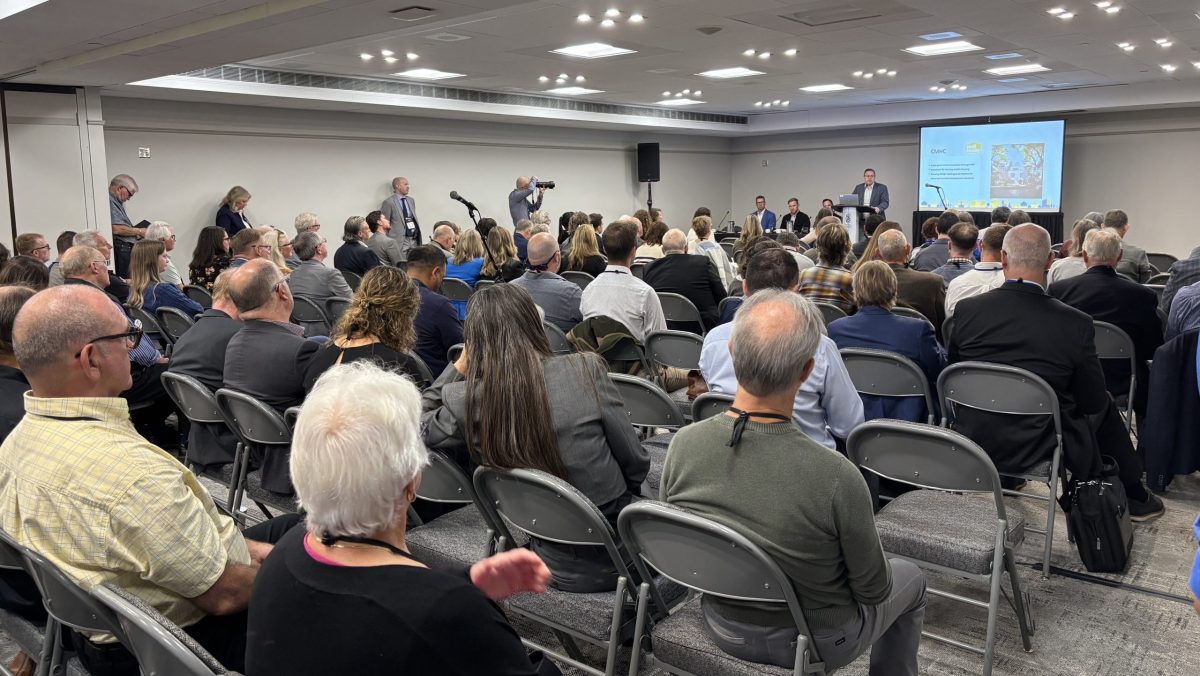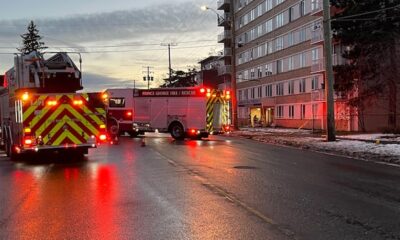Business
UBCM Focuses on Housing Solutions Following New Rezoning Policy

Participants at the Union of B.C. Municipalities (UBCM) conference shifted their focus to housing on September 23, 2025, during the session titled “After Upzoning: Activating New Housing Supply.” This transition follows a previous day dedicated to addressing street disorder, an issue increasingly impacting municipalities throughout British Columbia (B.C.).
The recent province-wide rezoning initiative introduced by the B.C. government mandates municipalities to enable the development of small-scale, multi-unit housing (SSMUH). Delegates at the conference discussed strategies to navigate the implications of this new housing legislation, emphasizing the urgent need to respond to community housing demands.
James Moore, the department manager of housing and policy programs for the City of Kelowna, highlighted the necessity for further bylaw adjustments following the implementation of the new zoning regulations. “You won’t get everything right on the first try,” he remarked. “We like to review and review and review and try to make everything perfect from day one.” This perspective underlines the complexities municipalities face as they work to adapt to the new requirements.
The Canada Mortgage and Housing Corporation (CMHC) also weighed in on the national implications of the legislation. Chris Woodcock, director of client relations and government relations at CMHC, noted that the types of housing permitted under this new framework are becoming accepted across Canada. “By next year, 70 percent of the Canadian population, including Quebec, will live in a jurisdiction that allows up to four units as a right,” Woodcock stated.
Despite the progress represented by the SSMUH legislation, Moore pointed out that discrepancies in local regulations complicate the redevelopment process. He expressed concern that the varying standards across neighboring municipalities can increase costs unnecessarily. “Every single home build has to be built to local standards that are completely different in next-door neighboring communities,” Moore explained. “It’s kind of like requiring every city to have different cars. I think we do need to consider where there are opportunities to start to align our regulations.”
The discussions at UBCM reflect a growing recognition of the challenges and opportunities presented by the government’s housing strategy. As municipalities work to implement these changes, the focus remains on finding effective ways to meet the housing needs of their communities while balancing regulatory requirements.
The outcomes of the UBCM discussions may significantly influence housing policy in British Columbia, shaping how municipalities approach development and community planning in the future.
-

 Politics4 weeks ago
Politics4 weeks agoSecwepemc First Nation Seeks Aboriginal Title Over Kamloops Area
-

 World5 months ago
World5 months agoScientists Unearth Ancient Antarctic Ice to Unlock Climate Secrets
-

 Entertainment5 months ago
Entertainment5 months agoTrump and McCormick to Announce $70 Billion Energy Investments
-

 Science5 months ago
Science5 months agoFour Astronauts Return to Earth After International Space Station Mission
-

 Lifestyle5 months ago
Lifestyle5 months agoTransLink Launches Food Truck Program to Boost Revenue in Vancouver
-

 Technology3 months ago
Technology3 months agoApple Notes Enhances Functionality with Markdown Support in macOS 26
-

 Lifestyle3 months ago
Lifestyle3 months agoManitoba’s Burger Champion Shines Again Amid Dining Innovations
-

 Top Stories2 months ago
Top Stories2 months agoUrgent Update: Fatal Crash on Highway 99 Claims Life of Pitt Meadows Man
-

 Politics4 months ago
Politics4 months agoUkrainian Tennis Star Elina Svitolina Faces Death Threats Online
-

 Sports5 months ago
Sports5 months agoSearch Underway for Missing Hunter Amid Hokkaido Bear Emergency
-

 Politics5 months ago
Politics5 months agoCarney Engages First Nations Leaders at Development Law Summit
-

 Technology5 months ago
Technology5 months agoFrosthaven Launches Early Access on July 31, 2025




















